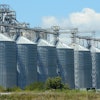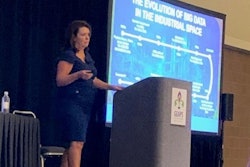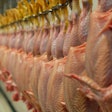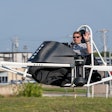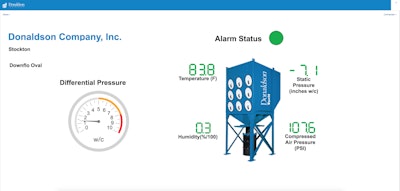
Donaldson Company, Inc. unveils its web-connected technology that monitors industrial dust, fume and mist collectors, and notifies owners to take early, cost-saving maintenance actions.
Donaldson will offer the solution through an early-adopter program. A formal launch is slated for 2019.
The smart technology uses sensors and a controller to gather real-time data from a collector, apply analytics in the cloud, and relay insights back to the operator through a web-based dashboard and email or text alerts. Proper maintenance such as timely filter changes or earlier hopper cleaning can help prevent larger problems, assist in optimizing performance, and aid in reducing total dust and fume management costs over time.
“Operators are looking for actionable data from their collectors," says Wade Wessels, global director of IoT and Connected Solutions for Donaldson. “Now our technology not only alerts them when equipment needs attention, but also spells out what actions to take,” The technology can help control costs by providing advanced notification of potential maintenance issues.”
The Donaldson solution can be installed on existing or new industrial dust and fume equipment. While benefits will vary, pilot tests have demonstrated significant savings in both time and costs.
A frequent three-hour maintenance job in one facility was reduced to just 15 minutes, for example, and premature filter wear in another was quickly discovered so that it could be diagnosed and solved remotely using historic data patterns.
“I am thrilled that we have already demonstrated value for owners by supporting increases in uptime, cutting maintenance hours, resolving issues faster and reducing filter replacement costs,” says Rick DeJong, senior director of product technologies for the Donaldson Torit® line of filtration equipment. “As we develop this technology even further, it will increasingly change dust equipment operation and maintenance from a reactive to a more proactive model.”

